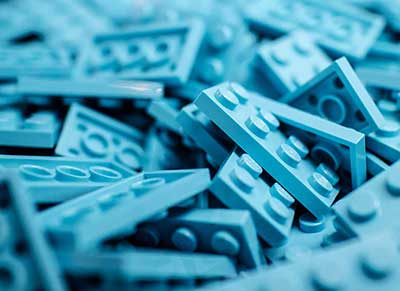
LEGO Therapy: What is it and does it treat autism?
Have you heard of the LEGO-Based Therapy? It is an alternative intervention to help children with autism spectrum disorder (ASD) learn social skills and social competence through LEGO play. The developers of LEGO-Based Therapy believed that this intervention approach has long-term outcomes on the child’s social skills, such as improvements in initiation of social contact with peers, duration of social interaction with peers, as well as reduction in stereotyped behaviours.
In this article, we would like to explore and review the LEGO-Based Therapy, and this article is simply EAP’s opinion on the efficacy of this intervention approach for children with autism spectrum disorder.
WHAT IS LEGO-BASED THERAPY?
LEGO-Based Therapy was developed by Dr. Daniel LeGoff in 2004, utilising LEGO as a therapeutic medium to provide effective social skills intervention for children with ASD.
In LEGO-Based Therapy, each child first has to learn a set of rules and develop LEGO building skills, and this is typically done during individual therapy. Thereafter, the child is introduced to a group of peers (who may or may not have social skills deficits), and the group is required to work together to build a project (e.g. buildings, structures). Within the group, the children are assigned different roles for the project, such as the ‘engineer’, ‘supplier’, and ‘builder’, and these roles rotate throughout the LEGO therapy sessions. Some of the target skills include communication, joint attention, focus, turn-taking, sharing, and problem-solving. These LEGO therapy sessions are typically facilitated by an adult who acts as the mediator and support positive interactions.
ARE THERE BENEFITS?
According to the study conducted by the pioneer of LEGO-Based Therapy, Dr. LeGoff, it was found that the LEGO Therapy participants showed improvements in a broad range of social skills and reduction in autistic-type social behaviours. Nonetheless, this study does not specify the various social skills that the participants had shown improvements in.
There are also other potential benefits for using LEGO as a therapeutic medium for children with autism.
- Improving fine motor skills. Children with autism can work on their fine motor skills (i.e. the use of the small muscles in the hands and fingers) while putting together and pulling apart the bricks.
- Improving visual perceptual skills. Children are required to build a LEGO model by following a diagram and/or set of visual instructions. This requires the child to identify various shapes, colours and sizes to find the correct brick.
- Expanding imaginative play skills. Children with autism are given the opportunity to express their creativity and expand on their imagination by building their own structures or figurines with LEGO.
THINGS TO NOTE:
- LEGO-Based Therapy is not a sole treatment option for children with autism spectrum disorder, as it is a play-based therapy to teach a child appropriate play and leisure skills, as well as social skills. It is important to note also that in the study conducted by LeGoff, the participants who were receiving LEGO therapy were also concurrently receiving other therapy services.
- The potential benefits of LEGO-Based Therapy may only be effective for children who have an interest in playing with LEGO and building LEGO models. The children in LeGoff’s study had demonstrated a keen interest in LEGO and therefore were motivated to participate in the therapy and demonstrate the expected social skills (i.e. cooperating with rules, sharing, turn-taking, establishing eye contact). As a result, the participants responded positively to the programme.
- Children would require functional communication skills before participating in LEGO-Based Therapy. To successfully participate in this therapy, your child would need to be able to receptively follow a series of complex instructions (verbal and visual) as well as give instructions according to the manual.
- At this point in time, there is insufficient evidence to support the efficacy of LEGO-Based Therapy as an intervention programme for children with autism spectrum disorder. However, utilising LEGO as a play activity may potentially have benefits for the child, as outlined above.
To conclude, play activities involving the use of LEGO can be fun and interesting, and it can also help promote appropriate play skills in children with autism. Before utilising LEGO as a therapy approach, we would recommend that you do further research into this approach and weigh out the benefits for your child with autism.
References
1. LeGoff, D. B. (2004). Use of LEGO as a therapeutic medium for improving social competence. Journal of Autism and Developmental Disorders, 34(5), 557-571.
2. LeGoff, D. B. and Sherman, M. (2006). Long-term outcome of social skills intervention based on interactive LEGO play. Autism, 10(4), 317-329.
3. Wagenfeld, A. (2005). Lego Therapy: How To Build Connections with Autism – One Brick At A Time. Autism Parenting Magazine. Retrieved from https://www.autismparentingmagazine.com/lego-therapy-how-to-build-connections-with-autism-one-brick-at-a-time/